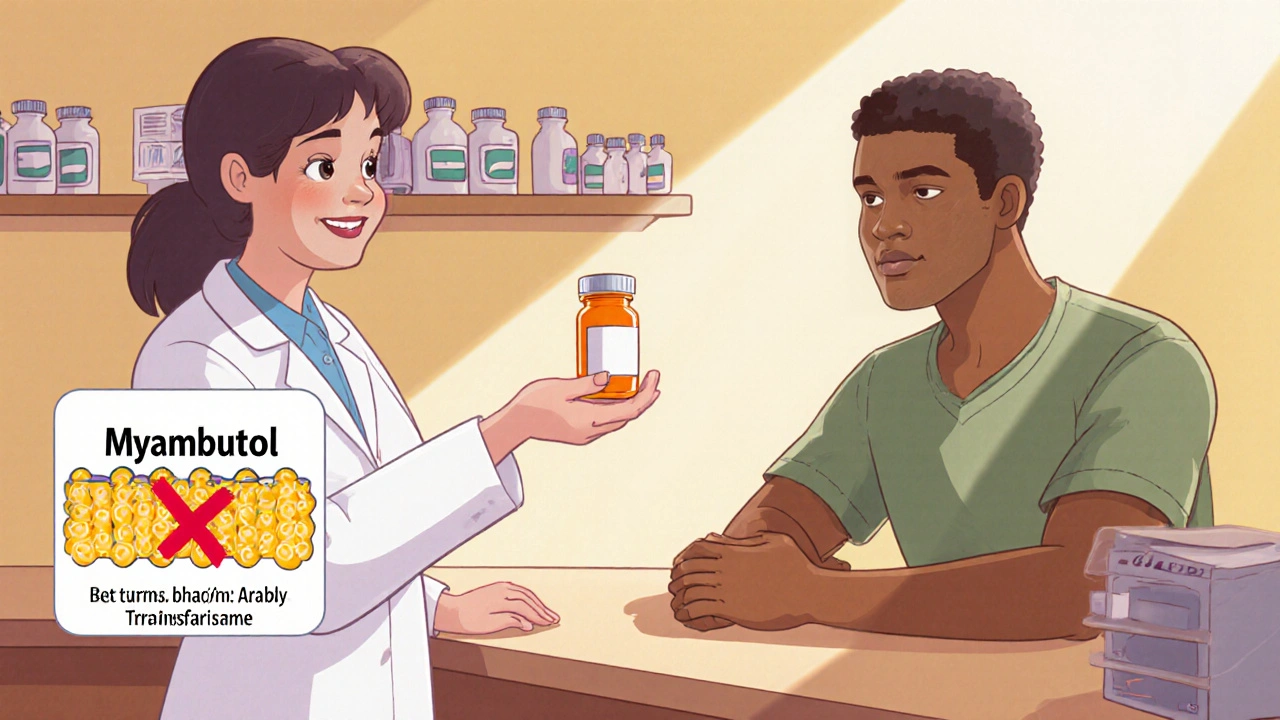Tuberculosis Drugs: Types, Uses, and Safety
When dealing with tuberculosis drugs, medications prescribed to treat infection caused by Mycobacterium tuberculosis. Also known as TB drugs, they form the backbone of global TB control efforts.
Understanding the enemy is half the battle. Mycobacterium tuberculosis, the bacterium that triggers pulmonary and extra‑pulmonary TB is a slow‑growing, acid‑fast organism that hides inside lung cells. Because it can lie dormant for years, therapy must be prolonged and aggressive. The bacterium’s waxy cell wall makes it naturally resistant to many antibiotics, which is why tuberculosis drugs need special mechanisms to penetrate and kill it.
Key Concepts
The cornerstone of treatment is the first‑line regimen, a four‑drug combination that includes isoniazid, rifampicin, ethambutol, and pyrazinamide. This mix attacks the bacteria from several angles: isoniazid blocks mycolic acid synthesis, rifampicin shuts down RNA polymerase, ethambutol disrupts cell wall formation, and pyrazinamide works best in acidic environments inside macrophages. Typically, patients take all four drugs daily for two months, then continue with isoniazid and rifampicin for an additional four months. Adherence to this schedule is crucial; missing doses can let the bacteria develop resistance.
When resistance does appear, the disease shifts to multi‑drug‑resistant TB, a form of tuberculosis that does not respond to at least isoniazid and rifampicin. Treating MDR‑TB requires second‑line agents such as fluoroquinolones, injectable aminoglycosides, and newer drugs like bedaquiline or delamanid. These medicines are often more toxic, need longer treatment (up to 20‑24 months), and demand careful monitoring for side effects like kidney damage or cardiac issues. The choice of drugs depends on regional resistance patterns, patient history, and susceptibility test results.
Safety is a moving target because each drug carries its own risk profile. Isoniazid can cause peripheral neuropathy, which is usually prevented with vitamin B6. Rifampicin may lead to orange discoloration of body fluids and liver enzyme elevation. Ethambutol requires vision checks to catch optic neuritis early, while pyrazinamide is notorious for joint pain and hyperuricemia. For MDR‑TB drugs, hearing tests and ECGs become routine. Regular lab work, patient education, and prompt management of adverse events keep therapy on track and prevent default.
All these pieces—bacterium biology, first‑line combos, resistance strategies, and safety monitoring—fit together to form a comprehensive picture of tuberculosis drugs. Below you’ll find a curated list of articles that dive deeper into each aspect, from drug comparisons to practical tips for managing side effects. Use them as a roadmap to stay informed and make the most of your treatment plan.
Ethambutol vs Other TB Drugs: Myambutol Comparison Guide
A detailed, side‑by‑side comparison of Myambutol (ethambutol) with other TB drugs, covering mechanisms, dosing, side effects, and when to choose each option.
Keep Reading
